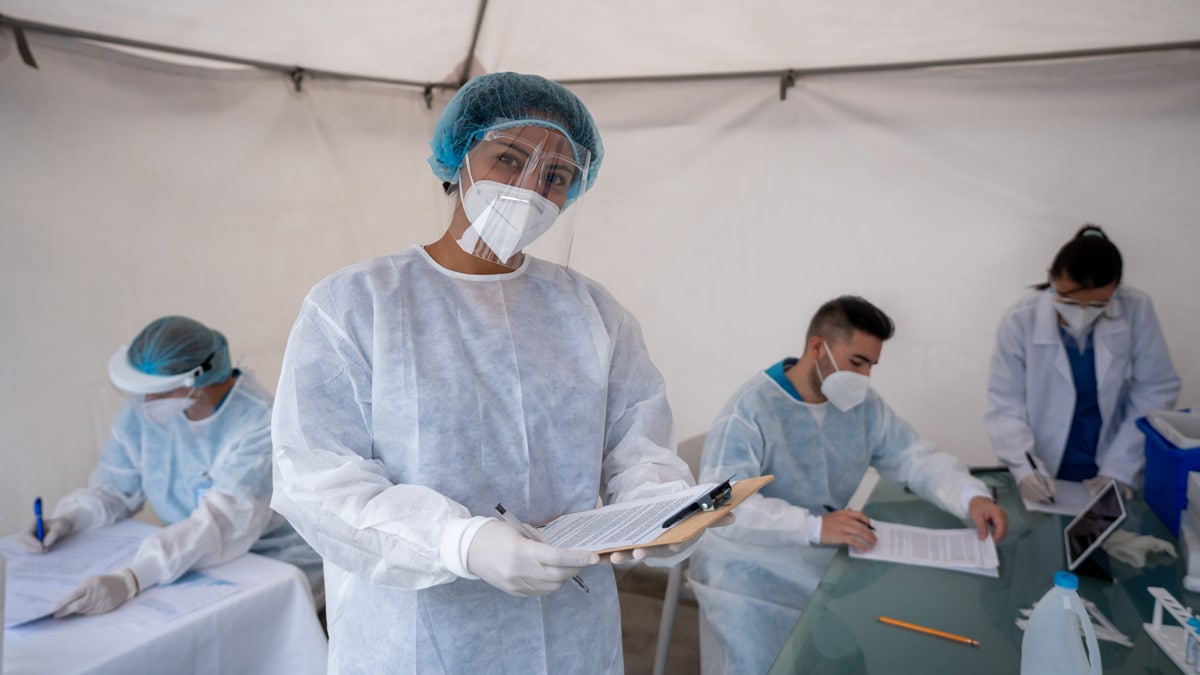At a glance
The frequency and severity of public health emergencies continue to intensify, as evidenced by the COVID-19 pandemic, recent outbreaks, and continuous activation of CDC’s Incident Management Structure (IMS) and Emergency Operations Center (EOC) for more than a decade. To improve the nation’s readiness to address public health threats within the U.S. and around the world, and elevate readiness and response science, CDC stood up the Division of Readiness and Response Science (DRRS) in 2023.

Our mission
DRRS develops and implements the science of readiness and response; builds scientific expertise to address health disparities and community mitigation; evaluates the state of state, tribal, local, and territorial (STLT) readiness and response; and informs a broader framework for evaluating CDC’s and partners’ readiness status.
Priorities
DRRS is working to achieve five priorities:
- Elevate Science: Elevate readiness and response science by working with inter- and intramural partners to advance relevant research, evaluation, dissemination, and implementation.
- Protect Communities: Implement behavioral science and community mitigation tactics informed by readiness and response science.
- Decrease Disparities: Decrease health disparities during public health emergencies by integrating health equity and special populations needs into all readiness and response efforts.
- Evaluate Efforts: Evaluate CDC's readiness state and how CDC-wide investments enable improvement of STLT and key partner's readiness states.
- Leverage Technology: Improve data preparedness, readiness and response early warning systems, event-based surveillance, and decision-making for the agency by advancing the common operating picture and platform.
Our work
DRRS consists of an Office of the Director and three branches that are working to progress the mission.
- The DRRS science function promotes scientific partnerships to improve whole community readiness and response science to address all-hazards emergencies and coordinates the translation of science into evidence-based practices.
- The DRRS policy and communications function leads, advises, and liaises across CDC, enabling DRRS branches to meet their mission through readiness and response policy, partnerships, strategy, and communications.
- The DRRS management resources function manages, plans, and coordinates customer-focused solutions to enable DRRS' management, budget, and administrative activities.
- The Public Health Readiness and Response Evaluation Branch (PHRRE) centralizes and leads readiness and response evaluation efforts across the agency, CDC's Public Health Emergency Preparedness Cooperative Agreement (PHEP CoAg), and key partners to understand how CDC-wide and ORR investments impact and enable improvements in response readiness.
- The Response Analytics, Decision Support, and Surveillance Branch (RADSS) advances situational awareness and response data science efforts to provide reliable, comprehensive, timely, high-quality information on public health threats and emergencies as they are identified, evolve, and require CDC responses.
- The Community-based Solutions and Health Equity Branch (CBSHE) develops, advances, and implements readiness and response sciences to mitigate adverse effects for populations and settings at higher risk, improve the impact of community mitigation during public health emergencies, and strengthens relationships with public health partners.
